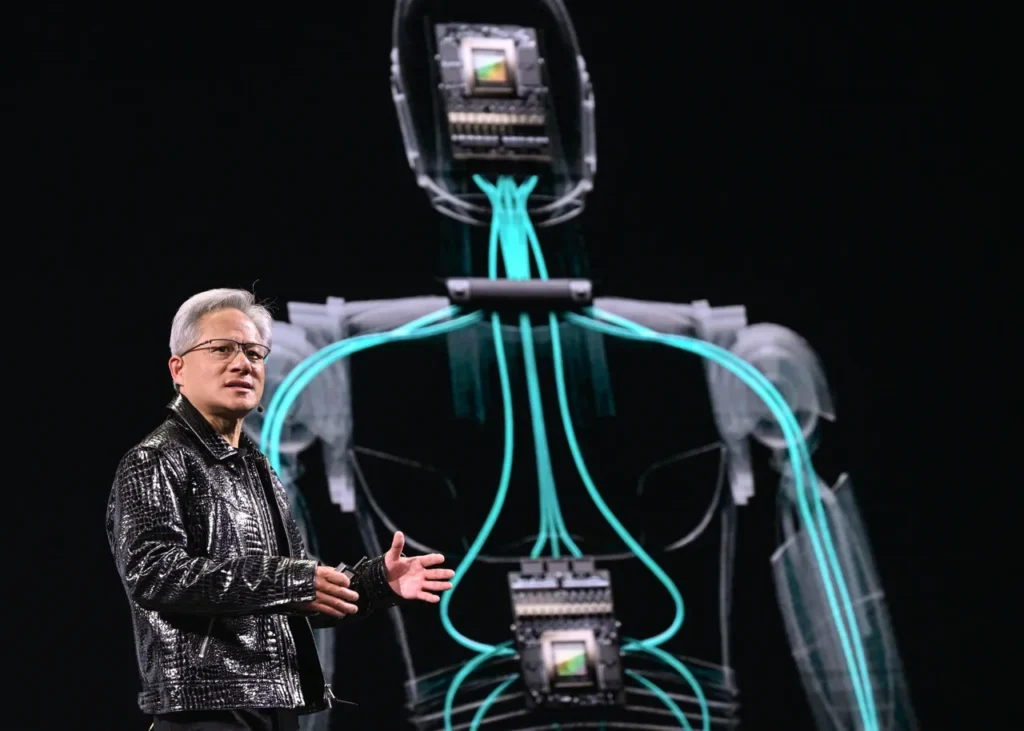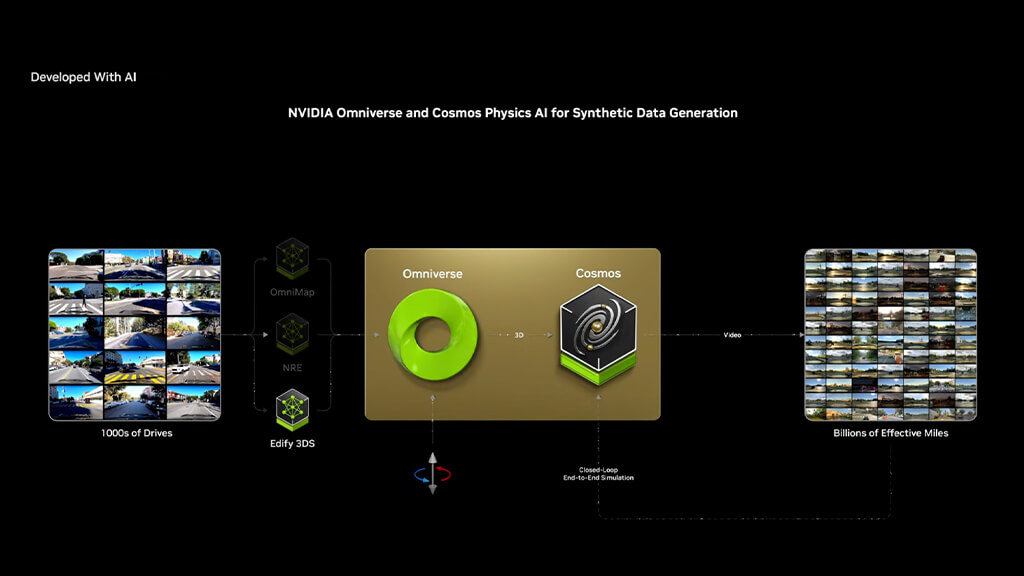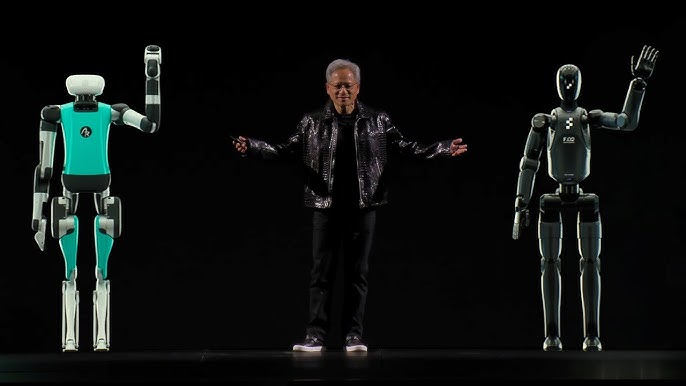Nvidia is revolutionizing artificial intelligence training with Cosmos, a cloud-based platform designed to generate synthetic training environments for robots, self-driving cars, and other AI-powered systems. Instead of relying on costly and time-consuming real-world data collection, Cosmos creates hyper-realistic digital environments where AI models can be trained, tested, and refined. By simulating photorealistic scenarios, this system accelerates the development of AI solutions across multiple industries, from autonomous driving to humanoid robotics.
For years, AI models have depended on vast amounts of real-world sensor data, video footage, and motion tracking to learn how to navigate their environments. This process requires extensive manual data collection, which can be expensive and limiting. Nvidia’s Cosmos changes the equation by enabling AI training in digital worlds that perfectly mimic real-life conditions. The result is a faster, more efficient AI training pipeline that eliminates the need for collecting massive amounts of real-world data while still delivering highly accurate, adaptable AI models.
What’s Happening & Why This Matters
AI training has traditionally been tied to real-world data. Still, Nvidia’s Cosmos is transforming the process by leveraging world foundation models (WFMs)—large-scale AI models capable of generating realistic environments from existing data sources. Instead of manually recording millions of hours of real-world interactions, developers can now use Cosmos to generate AI training scenarios in minutes.
This synthetic data revolution allows AI to be trained in controlled virtual settings that accurately replicate real-world physics, motion, and interactions. Using video analysis, motion tracking, and environmental modeling, Cosmos can construct high-quality 3D environments where AI models can simulate autonomous navigation, object detection, and human interaction before being deployed in the real world.

Cosmos works similarly to large language models, except it processes visual data to create photorealistic digital environments instead of processing text. These environments allow AI models to navigate, learn, and optimize their decision-making in ways that are impossible with conventional training methods.
The platform is also fully integrated with Nvidia Omniverse, a 3D simulation and collaboration platform that enables AI engineers to test self-driving systems, robotics, and automation tools in virtual environments before deploying them in real-world applications. This means AI models can be evaluated under various conditions—rain, fog, heavy traffic, unexpected obstacles—all within a controlled setting where failure carries no real-world consequences.
Who’s Using Cosmos?
Several industry leaders are already taking advantage of Nvidia’s synthetic training technology:
- Self-Driving Vehicles: Companies like Uber, Wayve, and Waabi use Cosmos to train autonomous driving systems by simulating real-world road conditions, traffic flow, and unexpected hazards.
- Humanoid Robotics: AI developers like Agility Robotics, Figure AI, and Galbot are incorporating Cosmos-generated training environments to improve humanoid robots’ interactions with people and objects in diverse settings.
- Autonomous Safety Testing: XPENG and Foretellix are using Cosmos to refine AI-powered collision avoidance, predictive modeling, and real-time response systems for next-generation vehicles.
Because these AI models are being trained in synthetic, photorealistic simulations, developers can expose their systems to thousands of unique scenarios without needing costly, real-world trial-and-error testing. This reduces development time, minimizes risks, and enhances the scalability of AI applications across multiple industries.
Why Nvidia’s Approach is Different
AI training methods traditionally rely on collecting large-scale datasets from the physical world, requiring expensive sensor installations, manual annotation, and extensive computing resources. With Cosmos, Nvidia has tried to circumvent these limitations by offering AI developers a cloud-based environment where models can be tested against millions of potential real-world situations before deployment.
Unlike conventional training approaches, where AI models must wait for real-world data collection to be processed, Cosmos generates new training data instantly based on pre-existing video, sensor data, and 3D modeling technologies. This results in faster model training, better accuracy, and a more adaptable AI ecosystem.

As AI adoption expands, synthetic training environments like Cosmos will become critical for industries seeking faster, safer, and more efficient AI development pipelines. The ability to test AI models without real-world risks will push industries like robotics, transportation, logistics, and security toward an era where AI-powered automation is more reliable, scalable, and responsive.
TF Summary: What’s Next
Nvidia has made Cosmos available via Hugging Face and its NGC catalog, allowing developers to build synthetic AI training models today. As self-driving cars, robotic automation, and industrial AI improve, Nvidia’s simulation-driven training methods could soon become the standard for AI development. With AI-powered automation on the rise, companies across multiple industries will likely adopt this technology to accelerate their AI deployment strategies.
— Text-to-Speech (TTS) provided by gspeech



